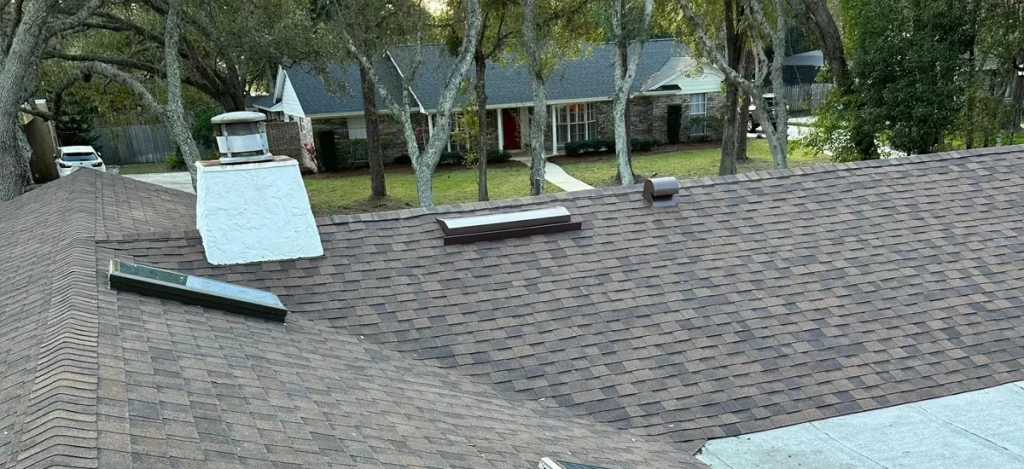Cost-Benefit Analysis of Storm-Resistant Roofing Materials
Introduction
The increasing frequency and intensity of storms have necessitated a closer examination of storm-resistant roofing materials. Homeowners, builders, and architects are increasingly prioritizing materials that can withstand severe weather conditions, not only to ensure safety and security but also to achieve long-term economic benefits. Understanding the cost-benefit analysis of these materials is crucial for making informed decisions.
Understanding Storm-Resistant Roofing
Storm-resistant roofing materials are specifically designed to endure extreme weather conditions, including high winds, hail, and heavy rain. These materials often undergo rigorous testing to meet stringent industry standards, ensuring they provide superior protection compared to traditional roofing options.
Types of Storm-Resistant Roofing
Metal Roofing
Metal roofing is renowned for its durability and resistance to extreme weather conditions. Typically made from steel, aluminum, or copper, these roofs can withstand high winds and heavy rainfall. Additionally, metal roofing is fire-resistant and requires minimal maintenance, making it an attractive option for many homeowners.
Asphalt Shingles
Modern asphalt shingles are engineered to offer enhanced protection against storm damage. They are often reinforced with fiberglass or other materials to improve their strength and durability. Asphalt shingles are also cost-effective and come in a variety of styles and colors, providing both functionality and aesthetic appeal.
Clay and Concrete Tiles
Clay and concrete tiles are incredibly durable and can withstand high winds and heavy rain. These materials are also fire-resistant and provide excellent thermal performance, contributing to energy efficiency. While the initial cost can be high, their longevity and minimal maintenance needs often offset this expense over time.
Slate Roofing
Slate roofing is one of the most durable roofing options available. It is highly resistant to wind and hail, making it an excellent choice for storm-prone areas. Slate roofs also offer a distinctive and elegant appearance, although they come with a higher initial cost and require professional installation.
Synthetic Roofing
Synthetic roofing materials, such as synthetic slate and rubber shingles, are designed to mimic the appearance of natural materials while offering superior storm resistance. These materials are lightweight, durable, and often made from recycled products, contributing to environmental sustainability.
Initial Costs
Material Costs
The initial costs of storm-resistant roofing materials vary widely depending on the type and quality of the material. Metal roofing and slate tend to be more expensive upfront, while asphalt shingles and synthetic materials offer more budget-friendly options. It is important to consider not only the cost of the materials but also their expected lifespan and maintenance requirements.
Installation Costs
Installation costs can also vary significantly based on the complexity of the roof design and the type of material chosen. Professional installation is crucial for ensuring the roof’s storm resistance, particularly for materials like slate and clay tiles that require specialized skills. While the upfront installation costs may be higher, the long-term benefits often justify the investment.
Long-Term Financial Benefits
Durability and Lifespan
Storm-resistant roofing materials are designed to last longer than traditional roofing options, reducing the need for frequent repairs and replacements. Metal roofs, for instance, can last up to 50 years or more with proper maintenance, while slate roofs can last over a century. This longevity translates into significant cost savings over time.
Maintenance Savings
Reduced maintenance is another major financial benefit of storm-resistant roofing materials. These materials are less likely to suffer damage from severe weather, meaning fewer repairs and lower maintenance costs. This can result in substantial savings, particularly in regions prone to frequent storms.
Insurance Premium Reductions
Many insurance companies offer discounts on premiums for homes equipped with storm-resistant roofing. This is because these materials reduce the risk of damage claims, making them a safer investment for insurers. Homeowners can often recoup some of their initial investment through these savings on insurance costs.
Energy Efficiency
Some storm-resistant roofing materials, such as metal and clay tiles, offer excellent thermal performance, helping to regulate indoor temperatures and reduce energy consumption. This can lead to lower heating and cooling costs, providing additional long-term savings for homeowners.
Safety and Security
Protection from Storm Damage
The primary benefit of storm-resistant roofing materials is their ability to protect homes from severe weather damage. These materials are designed to withstand high winds, heavy rain, and hail, reducing the likelihood of roof damage and subsequent interior damage. This protection not only ensures the safety of the home’s occupants but also preserves the structural integrity of the building.
Enhancing Home Security
In addition to protecting against weather-related damage, storm-resistant roofs can enhance overall home security. Durable roofing materials can deter potential intruders, as they are more difficult to breach compared to traditional roofing options. This added layer of security provides peace of mind for homeowners.
Environmental Impact
Sustainability of Materials
Many storm-resistant roofing materials are environmentally friendly, either through their production processes or their long-term sustainability. Metal roofs, for example, are often made from recycled materials and can be recycled again at the end of their lifespan. Similarly, clay and concrete tiles are made from natural materials and have a minimal environmental impact.
Recycling and Waste Management
The ability to recycle roofing materials is a significant environmental benefit. Unlike traditional asphalt shingles, which often end up in landfills, many storm-resistant materials can be recycled and repurposed. This reduces waste and promotes a more sustainable approach to roofing.
Aesthetic and Design Considerations
Curb Appeal and Home Value
Investing in storm-resistant roofing materials can significantly enhance a home’s curb appeal and overall value. High-quality materials like slate and clay tiles offer a timeless and elegant look that can boost a property’s marketability. Homebuyers are often willing to pay a premium for homes with durable, aesthetically pleasing roofs.
Customization Options
Storm-resistant roofing materials come in a wide range of styles, colors, and textures, allowing homeowners to customize their roofs to match their personal preferences and architectural styles. This versatility makes it easier to achieve the desired look while still benefiting from the protective features of storm-resistant materials.
Regional Considerations
Climate-Specific Recommendations
The choice of storm-resistant roofing materials should take into account the specific climate of the region. For example, metal roofing is highly effective in areas prone to wildfires and heavy snowfall, while clay and concrete tiles are ideal for regions with hot, dry climates. Understanding local weather patterns and selecting materials accordingly can optimize the benefits of storm-resistant roofing.
Local Building Codes
Compliance with local building codes is essential when installing storm-resistant roofing materials. These codes often specify requirements for wind resistance, impact resistance, and fire safety. Adhering to these regulations ensures that the roof not only provides adequate protection but also meets legal standards.
Case Studies
Real-World Examples
Examining real-world examples of homes with storm-resistant roofing can provide valuable insights into the practical benefits of these materials. Case studies often highlight how these roofs have withstood severe weather conditions and the long-term financial savings they have provided to homeowners.
Success Stories
Success stories from homeowners who have invested in storm-resistant roofing materials can be inspiring and informative. These accounts often detail the peace of mind, financial savings, and enhanced home value that result from choosing durable, weather-resistant roofing options.
Cost vs. Benefit Analysis
Quantitative Assessment
A quantitative assessment of the cost versus benefit of storm-resistant roofing materials involves comparing the initial costs with the long-term financial savings. This includes evaluating the reduction in maintenance and repair costs, insurance premium savings, and potential energy efficiency gains. By analyzing these factors, homeowners can determine the overall financial viability of investing in storm-resistant roofing.
Qualitative Assessment
In addition to financial considerations, a qualitative assessment examines the non-monetary benefits of storm-resistant roofing materials. This includes the increased safety and security, enhanced curb appeal, and peace of mind that comes from knowing the home is well-protected. These intangible benefits are often just as important as the financial savings.
ROI of Storm-Resistant Roofing
Financial Returns
The return on investment (ROI) for storm-resistant roofing materials can be substantial. By reducing the need for repairs, lowering insurance premiums, and increasing energy efficiency, these materials can provide significant financial returns over their lifespan. Additionally, the increased home value can further enhance the overall ROI.
Non-Financial Returns
Non-financial returns, such as enhanced safety, security, and aesthetic appeal, also contribute to the overall value of storm-resistant roofing. These benefits improve the quality of life for homeowners and can make a significant difference in their overall satisfaction with their home.
Common Myths and Misconceptions
Addressing Common Concerns
There are several common myths and misconceptions surrounding storm-resistant roofing materials. Addressing these concerns can help homeowners make more informed decisions. For example, some people believe that metal roofs are noisy during rainstorms, but modern metal roofing is designed to minimize noise. Similarly, the misconception that all storm-resistant materials are prohibitively expensive can be debunked by examining the long-term cost savings they provide.
Future Trends
Innovations in Roofing Materials
The roofing industry is continuously evolving, with new materials and technologies emerging to enhance storm resistance. Innovations such as impact-resistant shingles, advanced sealants, and smart roofing systems are making roofs more durable and efficient. Staying informed about these trends can help homeowners choose the best options for their needs.
Emerging Technologies
Emerging technologies, such as solar-integrated roofing and smart roof monitoring systems, are also transforming the market. These technologies not only offer improved storm resistance but also additional benefits such as energy generation and real-time damage detection. As these technologies become more accessible, they will likely become standard features in storm-resistant roofing.
FAQs
What are the main benefits of storm-resistant roofing?
Storm-resistant roofing offers enhanced protection from severe weather, reduced maintenance costs, potential insurance savings, and increased home value.
How do storm-resistant roofs impact home insurance costs?
Many insurance companies offer discounts on premiums for homes with storm-resistant roofing, reducing the overall cost of home insurance.
Are storm-resistant roofs environmentally friendly?
Many storm-resistant roofing materials are made from sustainable or recyclable materials, contributing to environmental sustainability.
Can storm-resistant roofs be customized to match my home?
Yes, storm-resistant roofing materials come in various styles, colors, and textures, allowing for customization to match the home’s aesthetic.
What is the expected lifespan of storm-resistant roofs?
The lifespan varies by material, with options like metal and slate lasting 50 years or more, while asphalt shingles typically last 20-30 years.
How do I choose the right storm-resistant material?
Consider factors such as local climate, budget, and aesthetic preferences when selecting the best storm-resistant roofing material for your home.
Conclusion
Summarizing Key Points
Investing in storm-resistant roofing materials provides numerous benefits, including enhanced protection, long-term financial savings, and increased home value. Understanding the cost-benefit analysis of these materials helps homeowners make informed decisions that ensure safety, security, and economic efficiency.
Final Thoughts
The choice of roofing material is a crucial decision for any homeowner, especially in storm-prone areas. By considering the long-term benefits and potential savings, storm-resistant roofing emerges as a wise investment that offers both financial and non-financial returns. Embracing innovative materials and technologies will further enhance these benefits, providing peace of mind and lasting value for years to come.














